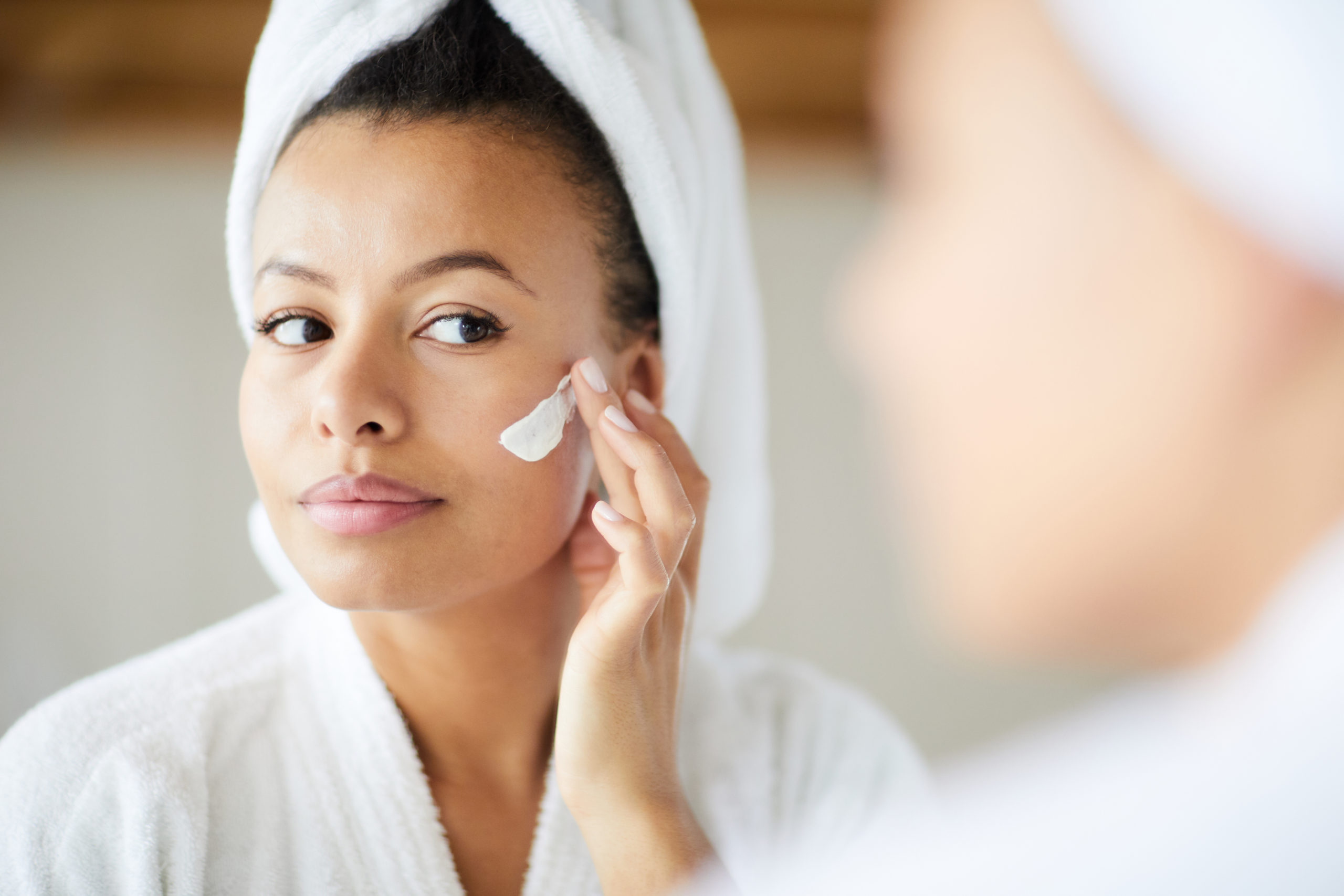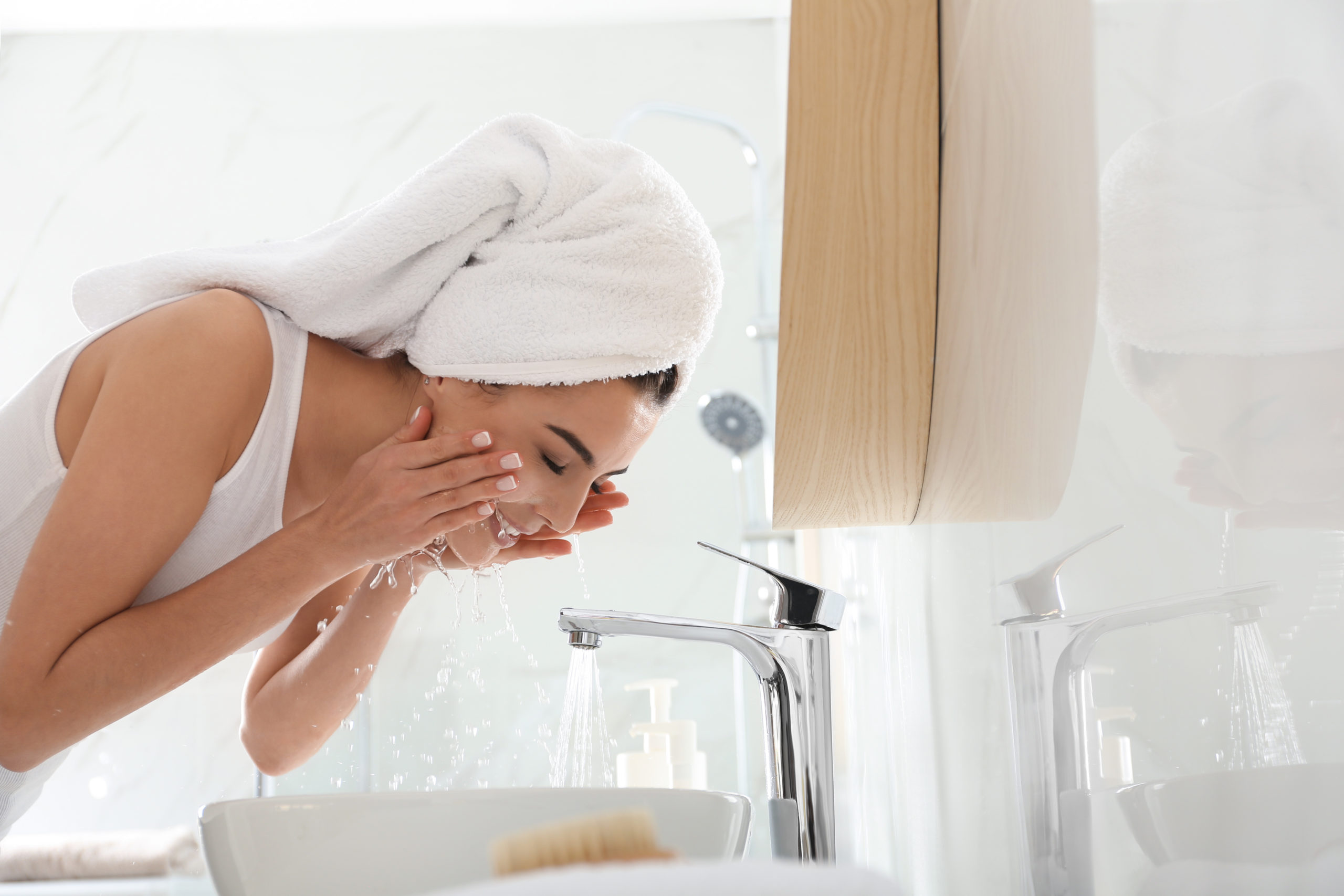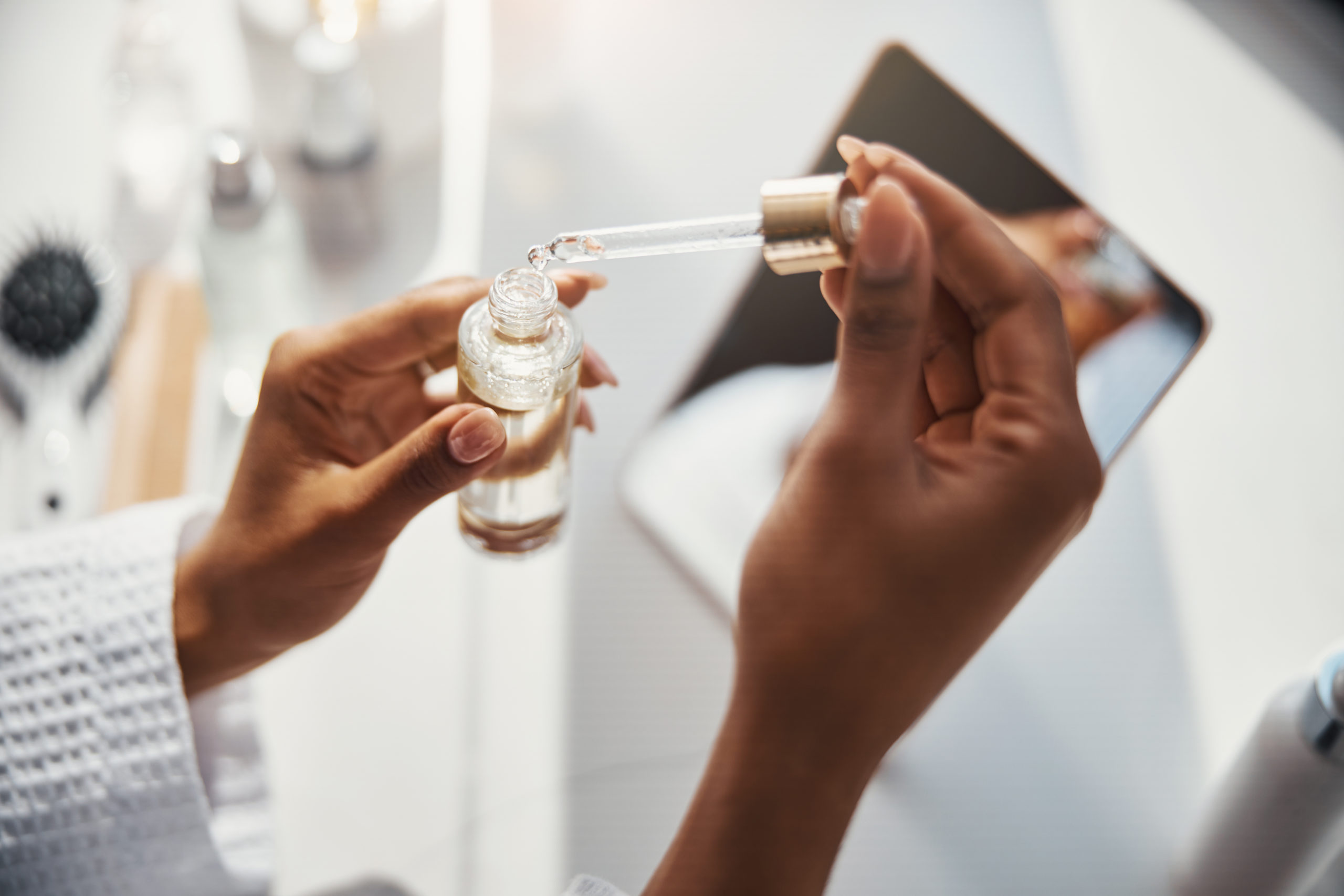Beauty...

By Elise Tabin
In the world of skincare, there’s a fine line of differentiation between the topical products we use on our skin in the waking hours versus when we sleep. Simply put, a well-rounded morning skincare routine should consist of damage-protecting ingredients and products as well as those that hydrate and safeguard the skin–reparative and restorative products work best when it is time to hit the hay. The biggest difference? Daytime is about defense, whereas the skin better absorbs products when in a reparative state, says SHEN Beauty esthetician Monica Dawidowicz.
But with so many options, how’s a girl to know which must-haves are practical for a morning routine? When time is of the essence, and you need a quick yet effective skincare program, these are the essentials to incorporate. Remember, everything is adjustable depending on your skin’s needs at any given time as long as you always include the basics for healthy skin—cleansing, hydration, antioxidants, and sun protection.
The first step in any well-devised morning skincare routine is cleansing. Perhaps the most fundamental skin care habit that most of us learn in our early teenage years, the act of cleansing thoroughly cleans the skin and relieves it of dirt, oil, bacteria, leftover makeup, and whatever was applied to it the night before. Plus, a good wash creates a clean slate so that your daytime products work that much better.
“When cleansing in the morning, you can give yourself a quick little 5-minute massage to de-puff and get the blood flowing,” recommends Dawidowicz. “Increasing circulation increases oxygen flow, which stimulates collagen production.” And we all know that healthy, strong collagen is the cornerstone of a plump, youthful complexion.

@adobestockimages
Your morning cleanser should be gentle and comforting and not stripping in the least bit—leave the heavy-duty face washes for the end of the day when cleansing is a bit of a heavier lift. Instead, try cleansing milks and lotions for normal to dry skin and use gel-based cleansers with salicylic acid or benzoyl peroxide for oily and acne-prone skin. Finally, reach for a light exfoliator for a polishing effect—nothing with nutshells or abrasive exfoliating agents. Dawidowicz also recommends gentle enzymatic powder-to-foam cleansing exfoliators, too.
While not everyone is dead set on using a toner (that’s okay), it’s often beneficial to incorporate one to get the skin extra clean. As beauty expert Gargi Patel of Vasanti Cosmetics explains, the use of a toner post-cleansing offers many benefits, including tightening the pores and serving as an antioxidant. In addition, toners balance the skin’s pH levels, which helps to bring the skin back to baseline.
Patel adds that besides the nutrients that toners may provide, they also enhance the skin’s texture, allowing makeup to glide on the surface. Plus, a good daily toner—today’s formulations are available in sprays, traditional water-like formulas, and even pack actives in their formulas—helps lift away any extra oil sitting on the skin and prep the skin for what’s to come next. One key piece of advice is to avoid using toners with alcohol, which can dry out the skin.
The delicate, thin skin around the eyes can easily show the signs of a late night or a poor night’s rest, so come morning, it’s essential to treat it right. We all face different eye woes: some of us are more dehydrated, others experience extreme puffiness, and dark circles are always the bane of countless women’s existence. That’s why it’s best to create a mini eye cream arsenal of sorts to tackle all the problems at hand. Gel eye creams are suitable for addressing fine lines and wrinkles, balms provide hydration is needed, caffeine-infused creams eliminate dark circles, and metal-tipped applicators often house cooling creams and serums to take down puffiness and bags.
Patel suggests patting on your favorite eye cream and then gently massaging it into the skin in a circular clockwise motion. “This helps strengthen the muscles around the eye while nursing the delicate skin,” she says. From there, you can reach for your most-trusted under-eye concealer to hide the signs of tired-looking eyes (although no one will know but you).
Serums are the perfect opportunity to infuse the skin with supercharged anti-aging ingredients to hydrate, protect against the signs of skin damage, and reverse any damage that the skin has already incurred. Serums, which are lighter in weight than creams, are loaded with heavy-hitting actives, like peptides, growth factors, and hyaluronic acid. Plus, unlike other products, transparent or gel-like serums don’t often tend to pill under makeup.

@adobestockimages
Morning is the ideal time to treat and protect the skin with proven anti-aging ingredients, like antioxidants, with free radical-quenching vitamin C (ascorbic acid) being perhaps the most potent yet effective one of the bunch. “For morning routines, it’s best to use serums and creams with ascorbic acid because it helps to protect the skin,” says Brian Nourian, Co-Founder of Le Jolie Medi Spa.
When it comes to hydration, every skin type needs it, but not everyone likes to wear moisturizer. The reason: certain skin types, namely oily and acne, often feel that moisturizers clog the pore and bring about pimples and other skin-related issues. But hydrating with a skin-appropriate moisturizer is a must to help strengthen the skin’s protective barrier and prevent moisture from escaping (that’s the main reason for dry skin). To mitigate pimple-causing possibilities, opt for a lightweight formulation during the day (you can go heavier at night) and apply it using the five-dot method. Take a quarter-sized amount of product and dot one dollop onto the forehead, each cheek, the chin, and the center of the nose and rub it in.
This way, your skin will get a hit of hydration without overdoing it.
CBD-rich moisturizing creams and serums are another option since they are anti-aging and anti-inflammatory. Nourian says after cleansing and using serum, apply a moisturizer followed by sunscreen. Moisturizer, be it a thicker cream or a lightweight lotion or gel, should always be applied as the last step in your skincare routine right before sunscreen. This way, the moisturizer’ locks everything else in.’
As Dawidowicz says, during the day, it’s imperative to use an SPF of at least 30 to protect the skin from sun damage. Without sunscreen, you’re just setting your skin up for tons of damage—think premature aging, hyperpigmentation, fine lines and wrinkles, uneven texture, and the potential for skin cancer.
Even if your day doesn’t consist of laying poolside sipping rose, it’s still imperative to protect the skin every single day from the sun with sunscreen. Plus, sunscreen helps protect the skin from blue light, the type of light emitted from overhead lights, computer and TV screens, and even our phones.
The most protective sunscreens are physical ones and contain either zinc oxide or titanium dioxide.
If you’re going to go the sunscreen-with-makeup route, that’s fine. But, do yourself a favor and add another layer of protection using a more traditional SPF.